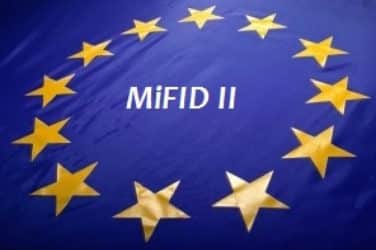
To describe the fast-approaching second iteration of Markets in Financial Instruments Directive as detailed would be an understatement.
Rules for non-discriminatory access between trading venues and central counterparties. Specifications of non-discriminatory pricing for systemic internalisers. Deferrals from pre-trade transparency. Cross-subsidization of research. Best-execution reporting.
That’s just a sampling.
Indeed, MiFID II has something for everyone.

Joe Wald, Clearpool
The mass of specific provisions presents the risk that market participants lose sight of MiFID II’s big picture, according to Joe Wald, CEO of trading-technology provider Clearpool Group. For sell-side brokers, getting too deep in the weeds holds practical implications when it comes to winning, and keeping, buy-side business. For the buy side, not properly aligning with the broad intent of the regulation can harm trade-execution quality and put a firm in catch-up mode right out of the gate.
“The objective of MiFID is a structured way to achieve best execution,” Wald told Markets Media. “It makes it a shared, and collaborative, process for the first time. That principle is incredibly important from a competitive standpoint, for everyone.”
“We hear a lot of talk about unbundling, and this rule and that rule and what forms you need to fill out, and all the different micro pieces of MiFID,” Wald said. “I think people are not seeing the forest through the trees.”
Set to come into force on January 3, MiFID II emanates out of Europe but it covers all firms that trade in European markets. Its overarching objective is to increase competition, transparency and consumer protection in investment services; in trading, MiFID II gives the buy side ownership of its execution, which will force investment firms to continually review processes and challenge their brokers when need be.
Trade handlers will need to raise their games in a more demanding landscape. Fully two-thirds of U.S. buy-side firms expect to shrink their list of execution brokers due to MiFID II, compared with 25% who envision no change and just 8% who expect to use more brokers, according to a recent Tabb Group survey. Transaction cost analysis, the report card for execution quality, was marked a significant factor in choosing brokers by two-thirds of buy-side survey respondents, versus one-third who said TCA is just one of many factors.

Valerie Bogard, Tabb Group
“A lot of firms are in agreement with the overall theme of the regulation, of trying to implement more transparency around how they determine which brokers to go to,” said Valerie Bogard, Tabb research analyst. “But I think a lot of those firms are getting bogged down with some of the specifics of those requirements.”
The UK’s Financial Conduct Authority drew up MiFID II with two primary concerns: that individual investors were overpaying — albeit indirectly — for research, and that investment advisors were not providing sufficiently robust trade-execution protections. That’s according to Tyler Gellasch, executive director of industry trade group Healthy Markets Association.
U.S. trading and investing firms that don’t transact in European markets aren’t specifically covered by MiFID II need not worry about complying with the regulation on January 3, but over time those that aren’t aligned with its broad intent risk falling behind the curve. “I suspect that those firms are going to catch up and will adopt many of the same best practices as the global firms,” Gellasch said.

Tyler Gellasch, Healthy Markets
To be sure, checking boxes is a big part of MiFID II compliance. Regulators have signaled they will cut some slack on enforcement early on as the industry ramps up its proficiency, but a detailed regulation calls for a detailed response on the part of market participants.
But establishing a culture, or mindset, of transparency and accountability for best execution accountability should come first, Wald noted.
“What we’re trying to avoid is people looking at this from a micro level without thinking holistically about their execution-quality reviews, how they structure that process internally, and what tools they use to achieve that,” Wald said. “As the partnership between the buy side and sell side continues to evolve, at the forefront will be collaboration.”
“In this MiFID endeavor, it’s collaborating and sharing information on a real-time and daily basis, as well as on a monthly and quarterly basis,” Wald continued. “Having the process, the people, and the tools in place to do it, are the keys.”




